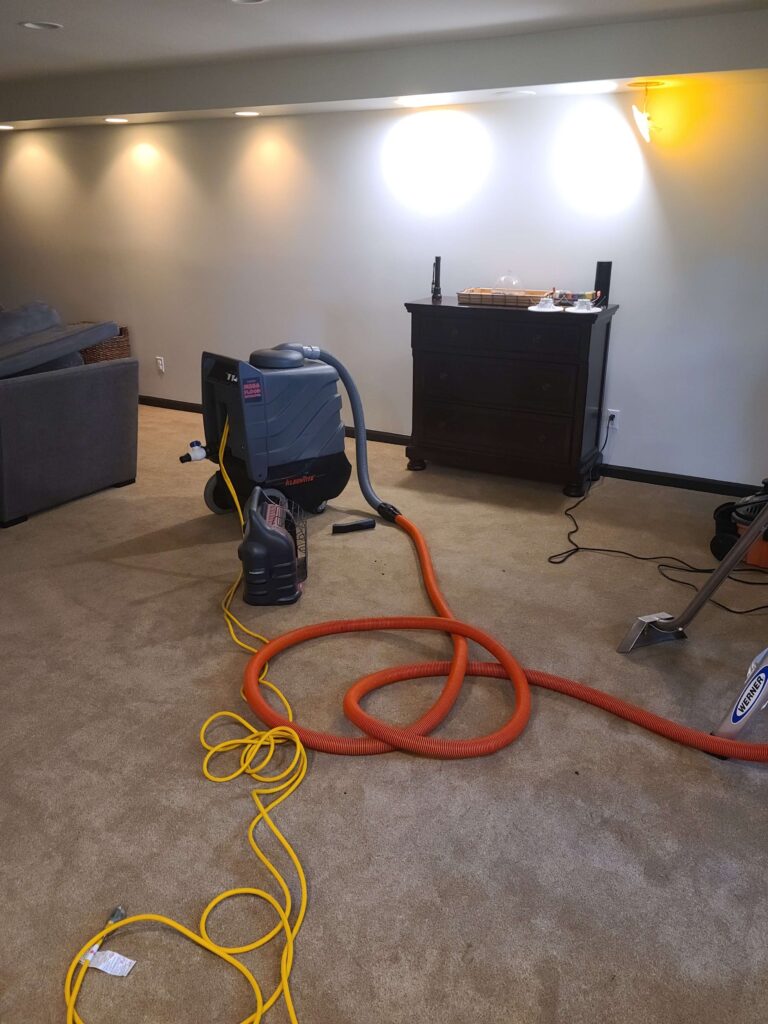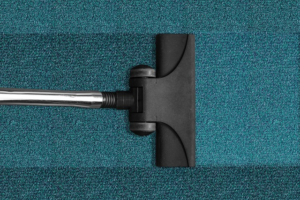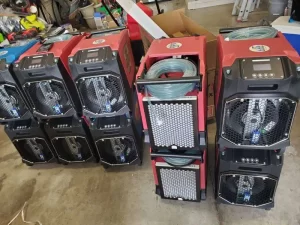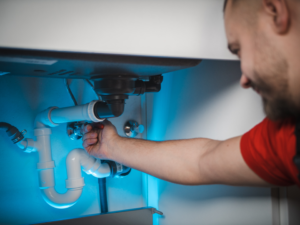When a flood strikes your Nashville home, immediate action is essential.
Water can damage just about everything in your home after only one hour, and mold spores can colonize within 24. To prevent further damage and costly repairs, you need to have a plan in place or be quick to call a water damage restoration company.
Below, learn how to dry out your home after water damage or flooding and protect yourself from flood damage if it ever strikes again.
Call A Professional Water Restoration Company
We understand it can be tempting to try and handle things yourself, but water damage can be hazardous – and costly if your insurance won’t cover you otherwise.
Call a professional water damage service if your house has any of the following:
- More than a couple gallons of standing water
- Mud, dirt, and silt in the affected area
- Traces of sewer backup
- A musty smell
- Swollen walls and floors
- Peeling or chipping paint, wallpaper, and drywall
Don’t take any chances – attempting to deal with a house with structural damage and bacterial contamination from flood waters or sewage backup can seriously impact your and your family’s health.
The Cleaning Process: Drying Out Your Home After Water Damage
While drying out your home after a flood, the first steps will always be the same, regardless of severity.
Prioritize Your Safety
Water damage, especially from flooding, can be dangerous, so your top priority should always be safety. Follow the following safety tips to protect you and your family after flood damage:
- Wear rubber boots, gloves, and plastic safety goggles before entering the affected area.
- Never step in standing water if power lines are down nearby.
- Have all sewer, electric lines, plumbing, and gas professionally inspected.
- If your doors stick, leave them shut; they may support the building structure.
- Don’t use a gas-operated generator inside.
- Stick to battery-powered lighting.
- Watch for frightened animals taking shelter in your home or crawl space.
Put In An Insurance Claim
Before cleaning, take photos and videos of the standing water, structural damage, and unsalvageable belongings throughout your property.
Then, call your insurance company as soon as possible and put in a claim.
If the issue is an ongoing emergency, such as a sewage backup, call for help before you call insurance. For floods, you can contact your company while you are evacuated.
Start the Drying Process
When you know it is safe to enter your house, your priority will be water extraction and moisture removal.
Tools like a sump pump or a wet vacuum can quickly remove water from your home. Open all windows and doors for air circulation, and set up high-powered fans and dehumidifiers to remove all remaining moisture in the air.
Removing excess moisture can take several weeks, and if you have more than a few gallons of water in your house, you’ll need to call in professional assistance.

Remove All Affecting Furniture & Belongings
While the air and any fans work, you can start cleaning by removing loose items and furniture.
Start two piles outside: discard and restore. Books, mattresses, a wet carpet, and insulation are likely unsalvageable. Solid wood furniture, on the other, might be restorable.
If you are recovering from a natural flood, the city will likely have specific instructions on disposing of your discarded items.
If you work with a restoration company, we can help determine what is salvageable and handle disposal.
Shovel Out Dirt & Debris
This part of the process is best left to the professionals.
After your house is clear of all excess water, silt, mud, or sewer water might be left in its wake. Silt and mud can be cleared with rakes and shovels, while sewage needs to be properly disposed of according to your city’s guidelines.
Again, make sure as many windows and doors as possible are open to help air out the affected rooms.
Clean Your Floors
The cleanup process here will vary depending on the type of flooring affected.
- Carpet: pull up the top layer, dispose of the carpet pad, and get your carpet professionally cleaned.
- Tile: sweep, mop, disinfect, then reseal your grout.
- Hardwood floors: sweep and mop with a gentle, non-soapy disinfectant.
- Vinyl, linoleum, and laminate: pull up your top layer and check on the sub floor. Clean and reinstall all undamaged flooring.
- Concrete: sweep, mop, and scrub with one cup of bleach for every one gallon of water.
Inspect & Clean Your Walls
To prevent mold, odors, and rotting wall studs, measure one foot above the visible water line, score a horizontal line along the drywall with a utility knife, and remove the drywall beneath that line.
All damp insulation needs to be tossed.
If you have brick walls, you can pressure wash them.
Unfortunately, wood and masonite siding will likely need to be replaced.
Focus on Mold Removal and Sanitation
You don’t want to reinstall or restore anything until your home is safe, dry, and sanitized of all harmful bacteria, mold, and mildew.
Mold growth can start in areas with excess moisture within 24 hours, leading to significant damage.
While you can handle smaller mold colonies, the CDC recommends calling in the experts if you have more than 10 sq. ft. of mold in your home.
How to Prepare: Minimizing Impact For Future Water Damage
You can take steps to react quickly, stay safe, and protect yourself financially in the event of future water damage.
Check Your Insurance
Don’t be caught unprotected. Heavy rains, clogged sewer lines, burst pipes, water heater malfunctions, and leaking appliances are all relatively common events that can ruin your house and your finances.
Add flood insurance today to protect you from future house floods.
Have Shelter Options
Talk to family and friends about where you can go during an emergency evacuation. If you have kids or pets, try to find somewhere that they can stay even after you’re allowed to return.
Flood water is full of harmful bacteria and other contaminants, so you want them to be safe while you work on cleaning up. Have an evacuation plan in place so you can act quickly and get where you need to go before the roads start clogging up with other cars.
Prepare Your Emergency Kits
If you can, keep a piece of luggage packed with protective gear for everyone; if you can’t, at least pack rubber boots. When you return, you may find a variety of safety hazards. Wearing rubber boots will be enough to let you reach the rest of your safety gear. In total, everyone should have:
- Rubber Boots
- Rubber Gloves
- N-95 or Higher Respirator Mask
- Safety Goggles
- Hand Sanitizer
- Cleanup Clothes
Clean-up clothes should be outfits that can get dirty and that you won’t mind throwing away once all is said and done. Ideally, you can keep your safety gear near your car and toss it in the trunk when it’s time to go. Then you’ll have the essentials when you get to come home.
Protect Important Items
Don’t store anything in cardboard boxes, as they don’t hold up to excess moisture at all.
Instead, store your belongings in air-tight rubber containers. Better yet, have a fire and water-proof safe to store important documents, such as your social security card.
For Fast Water Damage Remediation, Call Flood Kings
You can save time, money, and avoid health risks by working with a professional restoration company after flooding.
Rather than stressing over the cleanup process on your own, call in some powerful allies: our IIRC-certified technicians. If you are experiencing a flood, no matter the reason, contact our 24/7 service at 615-477-9968.








